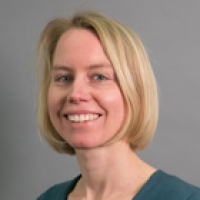The National Science Foundation (NSF) announced today an investment of $220 million to establish 11 artificial intelligence (AI) institutes, each receiving $20 million over five years. One of these, The Institute for Learning-enabled Optimization at Scale (TILOS), will be led by the University of California San Diego in partnership with the Massachusetts Institute of Technology; San Diego-based National University; the University of Pennsylvania; the University of Texas at Austin; and Yale University. TILOS is also partially supported by Intel Corporation.
Stefanie Jegelka, Associate Professor of EECS and Computer Science and Artificial Intelligence (CSAIL) principal investigator and Suvrit Sra, Esther and Harold E. Edgerton Career Development Associate Professor of EECS and principal investigator in the MIT Laboratory for Information and Decision Systems (LIDS) are part of the TILOS team, which includes engineers, computer scientists, data scientists and educators.
The team will tackle theoretical challenges in optimization and is poised to make fundamental advances with real-world impact in chip design, robotics and communication networks.
“These institutes are hubs for academia, industry and government to accelerate discovery and innovation in AI,” says National Science Foundation Director Sethuraman Panchanathan. “They lead to new capabilities that improve our lives...while growing the economy and maintaining global competitiveness.”
Optimization is a fundamental component of machine learning and an important area of modern AI. Conversely, learning can help solve difficult optimization problems. Foundational research in TILOS will explore this interplay to develop optimization methods that can change the leading edge of real-world practice. In close collaboration with industry partners, institute researchers will develop learning-enabled optimization tools for application areas of strategic importance to the United States, including chip design, robotics, and communication networks.
Foundational research will drive important applications, dramatically shortening the time needed to design chips, while increasing quality, productivity, and innovation in the process In robotics, optimization breakthroughs would improve the way robots learn and interact with humans and other robots in many contexts, including search and rescue, autonomous transportation, and warehouses. In communication networks, better optimization would lead to more capable and efficient power grids, mobile phones, and ecosystems within the Internet of Everything.

